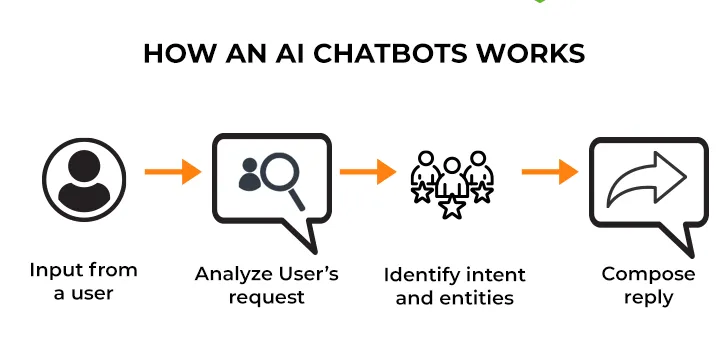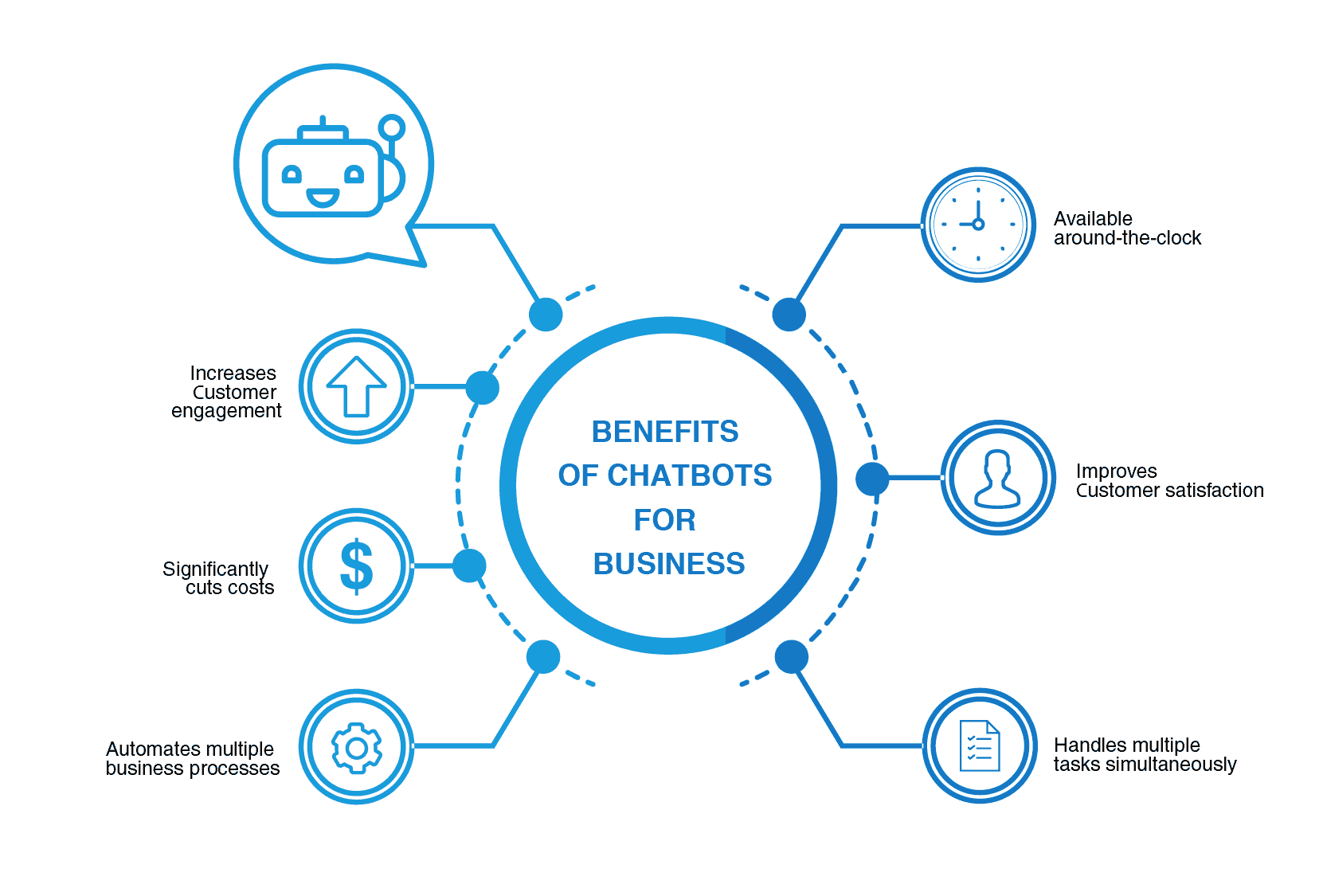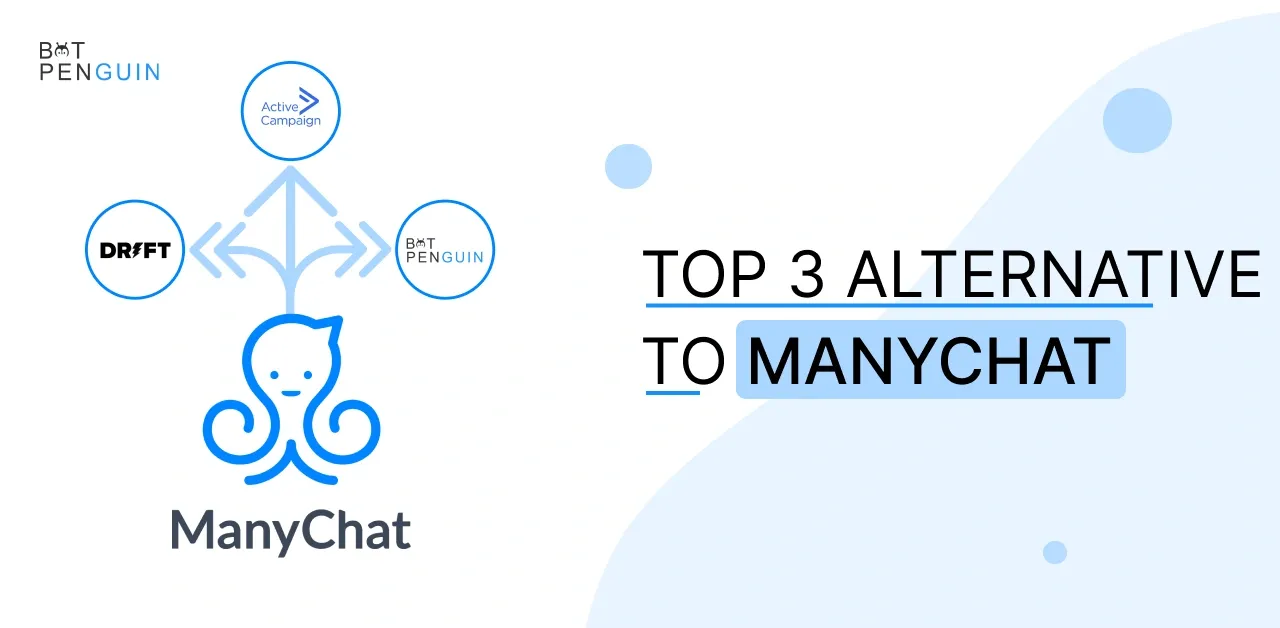Introduction
In 2024, the world of chatbots continues to evolve, offering businesses more opportunities to streamline their customer support, boost engagement, and increase sales. Chatfuel and BotPenguin have emerged as two leading contenders among the numerous chatbot platforms available.
But which one is the best fit for your specific needs? To help you make an informed decision, we've created the ultimate guide comparing Chatfuel and BotPenguin—a comprehensive analysis of their features, capabilities, and performance.
In this deep dive, we'll dissect the pros and cons of each platform, explore real-world use cases, and provide valuable insights to empower you in choosing the most effective chatbot solution for your business. So brace yourself for a thrilling chatbot showdown, and let's embark on this journey to discover the perfect chatbot platform for you in 2024!
What are Chatbots and How do They Work?

Chatbots, also referred to as conversational agents, are software programs that utilize natural language processing (NLP) to imitate human-like conversations with users.
Their purpose is to simulate human behavior and create an easy-to-use interface for communicating with computer systems. Chatbots are versatile and can serve different functions, such as customer service, marketing, and sales.
To operate, chatbots analyze user inputs to provide pertinent feedback. They accomplish this by utilizing a combination of machine learning algorithms and predefined rules to comprehend the intention behind a user's message and create a fitting response.
Chatbots can generate text, voice, or image-based responses depending on their programming.
There are two primary types of chatbots: rule-based and AI-based. Rule-based chatbots employ predetermined rules developed by developers to determine how to react to user inputs.
Conversely, AI-based chatbots use machine learning algorithms to improve their responses as they learn from user interactions. Consequently, their responses can change and adapt over time.
Examples of Chatbots
There are many examples of chatbots in use today. Here are a few:
Customer Service: Many businesses use chatbots to provide customer service support. For example, a chatbot might be used to help a customer track a shipment or answer a billing question.
Sales: Chatbots can be used to help customers make purchases. For example, a chatbot might help a customer find a specific product or make recommendations based on their preferences.
Personal Assistant: Chatbots can be used as personal assistants, helping users manage their calendars, set reminders, and make appointments.
Entertainment: Chatbots can also be used for entertainment purposes. For example, a chatbot might be designed to tell jokes or provide trivia questions.
The numerous benefits of chatbots

1. Make it easier to have seamless live communication
Nobody enjoys being kept waiting for an answer. If your company can resolve a customer's problem with your goods or services immediately, they'll rapidly gain patience.
There are numerous claims that people have attention spans comparable to those of goldfish. Still, regardless of whether these claims are true or false, it is clear that consumers' interactions with companies are shifting.
People can interact with your chatbot without any learning curve or previous training if it is incorporated into your customer support software. Chatbots can evaluate queries and respond to customer inquiries using NLP. Customers don't need to waste time contacting businesses because so many now use this on their websites and smartphone applications. Live conversation works flawlessly across all platforms, including well-known messaging services like Facebook Messenger's auto-reply.
The best method to interact with your customers via messaging is through a WhatsApp chatbot. It can be integrated with current enterprise IT tools and is simple to install. The chatbot will assist you in automating various tedious duties, including answering inquiries, resolving product bugs, and making recommendations based on customers' preferences.
2. Create a 24-hour customer service line
Chatbots don't require slumber, unlike your customer service staff. Your firm can be there for customers when they need help, even after regular business hours.
Since people can get assistance without waiting for a response to an email or voicemail, this promotes higher customer happiness.
3. Reduce costs and time
You might believe using this technology in a small company is expensive. However, when we take into account this research by Retail Dive, the ROI is worthwhile:
By 2024, chatbots will save the finance, retail, and healthcare industries $11 billion. The reductions from last year of $6 billion are almost doubled here.
The businesses and consumers in these three sectors will collectively save more than 2.5 billion hours by 2024.
At the same time, robots are predicted to help e-commerce reach a value of over $112 billion.
4. Reduce Customer Interactions with Individuals
The significant savings result from reducing the amount of time your staff typically spends responding to client inquiries.
By gradually replacing customer support agents with chatbots, you can significantly reduce interaction times on all platforms, including phone calls, social media, and messaging apps. One of the most apparent advantages of chatbots is this.
5. Get Rid of Boring, Time-Eating Tasks
Chatbots can replace many tedious, repetitive tasks presently carried out by customer support staff, which is one of their advantages.
People may find these tasks tedious and draining, but a bot won't ever complain—not even when a client becomes irate or belligerent.
The CEO of Drift, David Cancel claims that rather than seeing chatbots as a human simulator, people should see them as a more effective way to meet customer requirements.
What is Chatfuel?
Chatfuel is a versatile chatbot platform that allows businesses to create chatbots for Facebook Messenger and Telegram. It was founded in 2015 and had since then gained popularity due to its user-friendly interface and advanced AI capabilities.
Features of Chatfuel:
Drag and Drop Interface: Chatfuel's drag-and-drop interface allows users to create chatbots without any coding knowledge. The interface is intuitive and easy to use, making it accessible to beginners.
AI-Powered NLP: Chatfuel uses advanced natural language processing (NLP) algorithms to understand user inputs and respond accordingly. This feature makes chatbots more conversational and engaging.
Multi-Platform Integration: Chatfuel integrates with various platforms, including Facebook Messenger, Telegram, and more. This makes it easy to create chatbots that can reach a wider audience.
Broadcasting Messages: Chatfuel allows businesses to send broadcast messages to their users, keeping them informed about updates, offers, and more.
Analytics and Reporting: Chatfuel provides analytics and reporting features that help businesses understand how their chatbots are performing. It tracks metrics such as user engagement, retention, and more.
Chatfuel Tutorial: How to Create a Chatbot using Chatfuel
Step:1
Create an account on Chatfuel and select the platform you want to create a chatbot for.
Step:2
Use the drag-and-drop interface to create the chatbot's conversation flow. You can add messages, buttons, images, and more.
Step:3
Use Chatfuel's AI-powered NLP to train the chatbot to understand user inputs and respond accordingly.
Step:4
Integrate the chatbot with your website or social media accounts.
Step:5
Test and launch your chatbot.
Pros of Chatfuel:
Easy to use Interface: Chatfuel's user-friendly interface makes it easy for beginners to create chatbots without any coding knowledge.
Wide range of Integrations: Chatfuel integrates with various platforms, making creating chatbots that can reach a wider audience easy.
Advanced AI capabilities: Chatfuel's advanced NLP algorithms make chatbots more conversational and engaging.
Cons of Chatfuel:
Limited customization options: Chatfuel's customization options are limited, which can disadvantage businesses that want more control over the chatbot's appearance and behavior.
Limited Customer Support: Chatfuel's customer support options are limited, which can be frustrating for businesses that need assistance.
BotPenguin
BotPenguin is an AI-powered chatbot platform that allows businesses to create chatbots for various platforms, including Facebook Messenger, WhatsApp, and more. It was founded in 2019 and has since gained popularity due to its ease of use and advanced NLP capabilities.
Features of BotPenguin:
Pre-built Templates: BotPenguin provides templates allowing businesses to create chatbots quickly and easily. These templates cover various use cases, including customer support, lead generation, and more.
Multi-lingual Support: BotPenguin supports multiple languages, making creating chatbots for a global audience easy.
Advanced NLP: BotPenguin uses advanced NLP algorithms to understand user inputs and respond accordingly. This feature makes chatbots more conversational and engaging.
Third-Party Integrations: BotPenguin integrates with various third-party tools, including Zapier, Google Sheets, and 60+ more. This allows businesses to automate their workflows and save time.
Analytics and Reporting: BotPenguin provides analytics and reporting features that help businesses understand how their chatbots are performing. It tracks metrics such as user engagement, retention, and more.
Tutorial: How to Create a Chatbot using BotPenguin
Create an account on BotPenguin and select the platform you want to create a chatbot for.
Choose a pre-built template or create a chatbot from scratch using BotPenguin's drag-and-drop interface.
Integrate the chatbot with your website or social media accounts.
Test and launch your chatbot.
Pros of BotPenguin:
Easy to use Interface: BotPenguin's user-friendly interface makes it easy for beginners to create chatbots without any coding knowledge.
Advanced NLP Capabilities: BotPenguin's advanced NLP algorithms make chatbots more conversational and engaging.
Pre-built templates for quick setup: BotPenguin provides templates allowing businesses to create chatbots quickly and easily.
Chatfuel vs. BotPenguin: The Ultimate Comparison
Now that we have looked at the features and tutorials of both Chatfuel and BotPenguin let's compare them to determine which platform is better suited for your business needs.
Ease of Use
Both Chatfuel and BotPenguin have user-friendly interfaces that make it easy for beginners to create chatbots without any coding knowledge. However, BotPenguin has a more intuitive drag-and-drop interface that is easier to use than BotPenguin's interface.
AI Capabilities
Chatfuel and BotPenguin use advanced NLP algorithms to understand user inputs and respond accordingly. However, BotPenguin has more advanced NLP capabilities, making its chatbots more conversational and engaging.
Customization Options
Chatfuel and BotPenguin have limited customization options, which can disadvantage businesses that want more control over the chatbot's appearance and behavior. However, BotPenguin offers more customization options than BotPenguin.
Integrations
Chatfuel and BotPenguin integrate with various platforms, making creating chatbots that can reach a wider audience easy. However, BotPenguin has more integrations than BotPenguin, which can disadvantage businesses that need to automate their workflows.
Customer Support
Chatfuel and BotPenguin have limited customer support options, which can be frustrating for businesses needing assistance. However, BotPenguin has more extensive documentation and tutorials available than BotPenguin.
Chatfuel and BotPenguin are both excellent chatbot platforms with unique strengths and weaknesses. If you are looking for an easy-to-use platform with more customization options, Chatfuel might be a better fit for you. If you want a platform with more advanced NLP capabilities and integrations, BotPenguin might be a better fit for you. Ultimately, choosing the two platforms depends on your business needs and preferences.
Chatfuel vs. BotPenguin: Alternatives
While Chatfuel is an excellent chatbot platform, it may not be the best fit for every business. Fortunately, there are several other chatbot platforms available that offer similar features and capabilities. In this section, we'll look at some of the best Chatfuel alternatives.
ManyChat
ManyChat is a popular chatbot platform that allows businesses to create chatbots for Facebook Messenger, SMS, and more. Like Chatfuel, ManyChat has a user-friendly drag-and-drop interface that makes it easy to create chatbots without any coding knowledge. ManyChat also has advanced NLP capabilities, integrations with various third-party tools, and extensive documentation and tutorials available. One advantage of ManyChat is that it offers a free plan with limited features, making it a great option for small businesses with limited budgets.
Tars
Tars is a chatbot platform that creates conversational landing pages and chatbots for websites. It uses advanced NLP algorithms to create engaging and personalized conversations with website visitors. Tars also has extensive customization options, integrations with various tools like Zapier and Google Sheets, and analytics and reporting features that allow businesses to track user behavior and engagement.
Flow XO
Flow XO is a chatbot platform that allows businesses to create chatbots for various platforms, including Facebook Messenger, Slack, and more. Like Chatfuel, Flow XO has a drag-and-drop interface that makes it easy to create chatbots without any coding knowledge. Flow XO also has advanced NLP capabilities, integrations with various third-party tools, and analytics and reporting features that allow businesses to track user behavior and engagement.
MobileMonkey
MobileMonkey is a chatbot platform that allows businesses to create chatbots for various platforms, including Facebook Messenger, SMS, and more. MobileMonkey's user-friendly interface will enable businesses to create chatbots quickly and easily. MobileMonkey also has advanced NLP capabilities, integrations with various third-party tools, and extensive documentation and tutorials available. One advantage of MobileMonkey is that it offers a free plan with limited features, making it an excellent option for small businesses with limited budgets.
Dialogflow
Dialogflow is a chatbot platform that uses advanced NLP algorithms to create conversational chatbots for various platforms, including Facebook Messenger, Slack, and more. Dialogflow has extensive customization options, integrations with various third-party tools, and analytics and reporting features that allow businesses to track user behavior and engagement. Dialogflow also offers a free plan with limited features, making it a great option for small businesses with limited budgets.
Conclusion
While Chatfuel is an excellent chatbot platform, it may not be the best fit for every business. Fortunately, there are several Chatfuel alternatives available that offer similar features and capabilities.
Whether you're looking for a platform with advanced NLP capabilities, extensive customization options, or a free plan, a chatbot platform can meet your business needs. Be sure to evaluate each platform's features, pricing, and customer support before deciding.
BotPenguin is a better alternative to Chatfuel for businesses looking to create engaging and personalized chatbots. With its advanced NLP capabilities, user-friendly interface, multi-platform support, extensive customization options, analytics and reporting features, and 24/7 support, BotPenguin offers businesses everything they need to create chatbots that deliver results.
Frequently asked questions (FAQs)
What are the main differences between Chatfuel and BotPenguin?
Chatfuel and BotPenguin are both popular chatbot platforms, but they differ in various aspects. Chatfuel offers a user-friendly interface and advanced features like AI integration, while BotPenguin emphasizes pre-built templates and easy customization. Additionally, Chatfuel provides more integrations with third-party apps and platforms, while BotPenguin offers a unique multilingual support feature. Ultimately, the choice between Chatfuel and BotPenguin depends on your specific requirements and preferences.
Can I use Chatfuel or BotPenguin for e-commerce purposes?
Yes, both Chatfuel and BotPenguin can be utilized for e-commerce purposes. They offer features such as product showcasing, order tracking, and customer support integration, allowing businesses to create chatbots tailored for e-commerce. Chatfuel's integrations with e-commerce platforms like Shopify and WooCommerce provide additional functionalities, while BotPenguin offers a conversational AI approach that can enhance the user experience in e-commerce scenarios.
Does Chatfuel or BotPenguin support multilingual chatbots?
While both Chatfuel and BotPenguin offer multilingual support to some extent, BotPenguin specializes in this area. BotPenguin provides seamless multilingual chatbot creation, allowing businesses to engage with customers in their preferred language. This can be especially useful for businesses targeting a global audience or operating in multilingual markets. Chatfuel also supports multiple languages but may have fewer customization options compared to BotPenguin.
Which platform offers better customer support, Chatfuel or BotPenguin?
Chatfuel and BotPenguin prioritize customer support, but they have different approaches. Chatfuel provides extensive documentation, a knowledge base, and a community forum for self-help, along with email support for paid plans. BotPenguin offers 24/7 live chat support for all users, ensuring quick assistance. The choice between the two depends on your preference for self-help resources versus direct live chat support.


